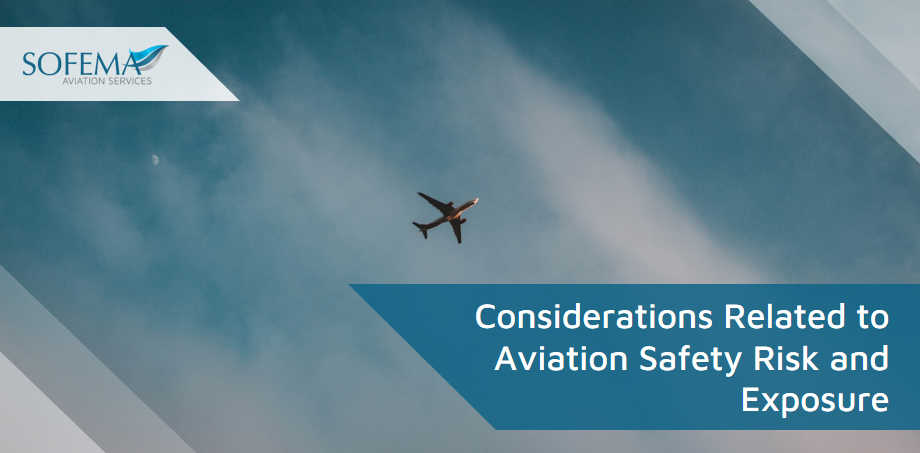Sofema Aviation Services (SAS) www.sassofia.com considers the challenges and best practices related to the Management of Aviation Safety Risk and Exposure.
Introduction
Safety risk and exposure within an aviation environment is a critical topic, encompassing the various hazards and challenges that can occur during flight operations, as well as the measures in place to manage these risks. Organizations should integrate safety as a core component of their strategic objectives, ensuring it receives the necessary attention and resources.
- The primary goal is to minimize the risks associated with aviation business operations, whether for people flying or on the ground.
Understanding Risk and Exposure in Aviation
The organizational elements and dimensions of managing safety risks and exposure within an aviation environment play a critical role in maintaining high safety standards and minimizing risk. These elements include the structure, culture, practices, and communication strategies that an aviation organization employs.
Risk in an aviation context generally refers to the probability of a hazardous event occurring and the severity of the outcomes if it does happen.
- Many aviation organizations have a centralized safety department responsible for overseeing all safety-related activities.
o This includes monitoring compliance with safety regulations, analyzing incident reports, and recommending improvements.
- Clearly defined roles and responsibilities are crucial for effective safety management.
- Effective coordination between different departments (operations, maintenance, human resources, etc.) helps in managing safety holistically, ensuring that safety considerations are integrated into all aspects of operations.
Safety Culture
- Promoting a just culture where employees feel safe to report errors and near misses without fear of retribution is essential.
- The commitment of top management to safety is crucial. Leaders must prioritize safety, allocate resources to safety initiatives, and lead by example.
- An organization that learns from past incidents and continuously seeks to improve its safety performance creates an environment where safety is a dynamic and integral part of operations.
Communication Practices
- Information about safety policies, incidents, and changes in procedures should be transparently communicated to all employees.
- Effective mechanisms for feedback on safety practices allow for ongoing adjustments and improvements.
o These can include regular safety meetings, suggestion boxes, and safety committees.
- Regular training programs that are updated to reflect the latest safety practices and regulatory changes ensure that all employees are equipped with the necessary skills and knowledge to perform their roles safely.
Challenges in Organizational Safety Management
- Ensuring adequate allocation of financial, human, and technological resources to safety initiatives can be challenging, especially in a competitive and cost-sensitive industry like aviation.
- Implementing new safety technologies or procedures can meet resistance if not managed properly.
o Effective change management strategies are necessary to ensure smooth transitions.
Next Steps
Follow this link to our Library to find & download related documents for Free.
For ICAO and EASA-compliant safety management system training available in the classroom, webinar, or online training, please see www.sassofia.com or www.sofemaonline.com. For more information, comments or questions, please contact team@sassofia.com.
Tags:
Risk Mitigation, Aviation Hazard Management, Aviation Risk Assessment, Safety Communication, ICAO Compliance, Aviation Risk Exposure, Aviation Best Practices, Aviation Safety Culture, Aviation Compliance, Aviation Safety Standards, Aviation Safety Risk Management, aviation safety, Operational Safety, SAS blogs, EASA compliance, Just Culture, Aviation safety training, Aviation Leadership, Aviation Safety Management System, safety performance, Aviation Training





